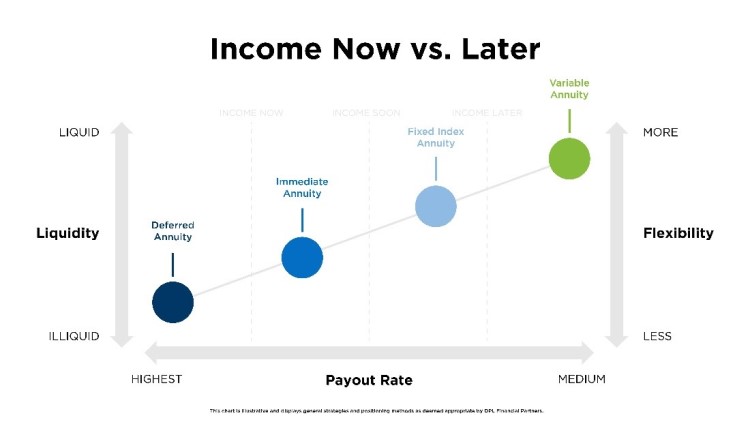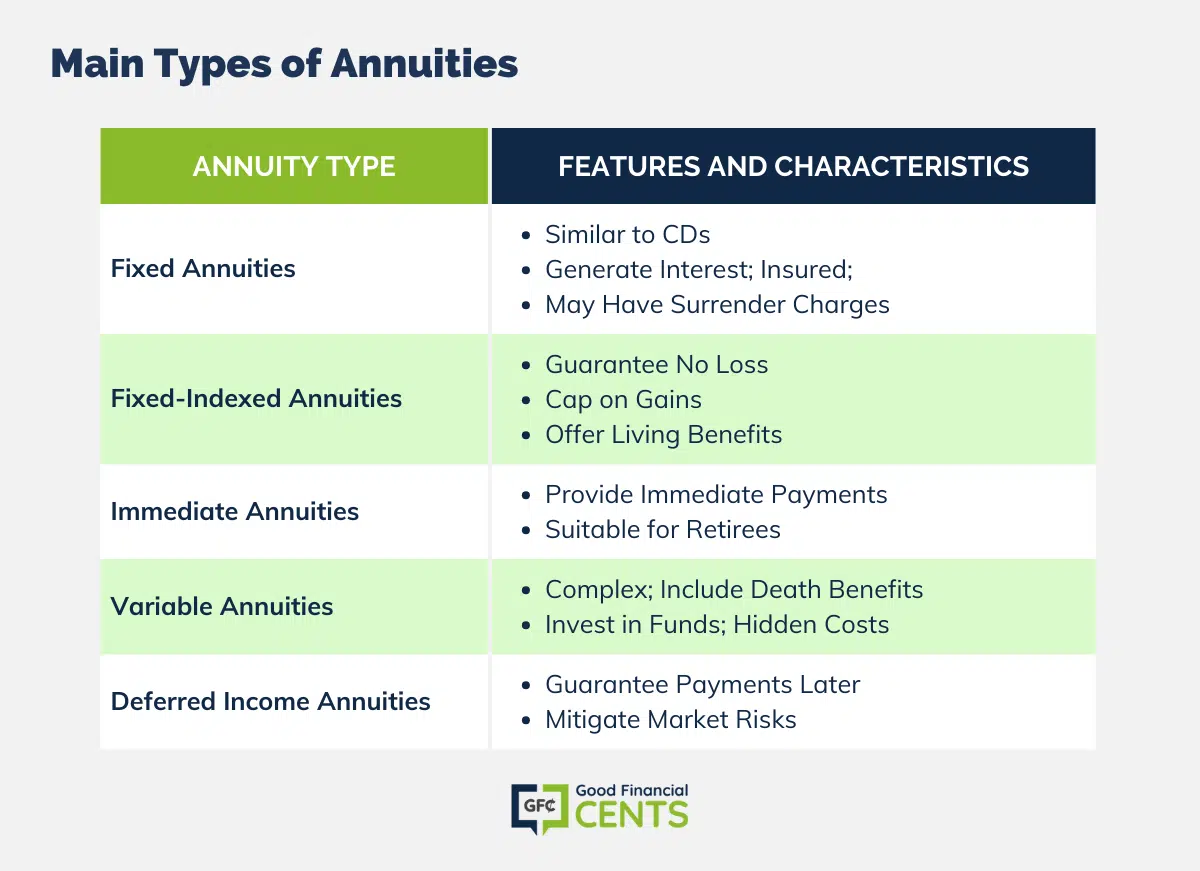All Categories
Featured
Table of Contents
Simply as with a fixed annuity, the owner of a variable annuity pays an insurance provider a round figure or series of settlements for the promise of a collection of future repayments in return. Yet as mentioned over, while a repaired annuity expands at an ensured, consistent price, a variable annuity expands at a variable rate that relies on the efficiency of the underlying financial investments, called sub-accounts.

Throughout the buildup stage, assets purchased variable annuity sub-accounts grow on a tax-deferred basis and are taxed only when the contract proprietor takes out those profits from the account. After the accumulation stage comes the revenue phase. In time, variable annuity properties must in theory boost in value till the agreement proprietor decides he or she would love to start withdrawing cash from the account.
One of the most considerable problem that variable annuities usually present is high cost. Variable annuities have several layers of fees and expenses that can, in aggregate, create a drag of approximately 3-4% of the contract's value every year. Below are the most usual charges connected with variable annuities. This expense compensates the insurer for the threat that it thinks under the regards to the contract.
Breaking Down Your Investment Choices Everything You Need to Know About Financial Strategies Defining the Right Financial Strategy Pros and Cons of Fixed Vs Variable Annuity Why Choosing the Right Financial Strategy Can Impact Your Future How to Compare Different Investment Plans: Simplified Key Differences Between Different Financial Strategies Understanding the Rewards of Retirement Income Fixed Vs Variable Annuity Who Should Consider Annuities Variable Vs Fixed? Tips for Choosing Fixed Vs Variable Annuity FAQs About Annuities Variable Vs Fixed Common Mistakes to Avoid When Planning Your Retirement Financial Planning Simplified: Understanding Variable Annuity Vs Fixed Annuity A Beginner’s Guide to Deferred Annuity Vs Variable Annuity A Closer Look at Annuities Fixed Vs Variable
M&E expense charges are computed as a portion of the agreement worth Annuity providers pass on recordkeeping and various other management prices to the agreement owner. This can be in the type of a flat yearly cost or a percent of the contract value. Administrative costs might be included as part of the M&E risk cost or may be assessed independently.
These charges can vary from 0.1% for easy funds to 1.5% or even more for proactively taken care of funds. Annuity agreements can be personalized in a variety of means to serve the details demands of the agreement proprietor. Some usual variable annuity riders include guaranteed minimum accumulation advantage (GMAB), assured minimum withdrawal benefit (GMWB), and ensured minimal earnings benefit (GMIB).

Variable annuity payments provide no such tax reduction. Variable annuities often tend to be extremely inefficient vehicles for passing wide range to the following generation because they do not enjoy a cost-basis adjustment when the original contract owner passes away. When the proprietor of a taxable financial investment account dies, the price bases of the financial investments kept in the account are adapted to reflect the market rates of those investments at the time of the proprietor's fatality.
Analyzing Strategic Retirement Planning A Comprehensive Guide to Investment Choices Defining Fixed Annuity Vs Variable Annuity Advantages and Disadvantages of Fixed Index Annuity Vs Variable Annuity Why What Is A Variable Annuity Vs A Fixed Annuity Is a Smart Choice How to Compare Different Investment Plans: How It Works Key Differences Between Fixed Annuity Vs Variable Annuity Understanding the Key Features of Long-Term Investments Who Should Consider Strategic Financial Planning? Tips for Choosing Pros And Cons Of Fixed Annuity And Variable Annuity FAQs About Planning Your Financial Future Common Mistakes to Avoid When Choosing a Financial Strategy Financial Planning Simplified: Understanding Indexed Annuity Vs Fixed Annuity A Beginner’s Guide to Fixed Annuity Vs Variable Annuity A Closer Look at How to Build a Retirement Plan
Therefore, beneficiaries can acquire a taxable investment portfolio with a "fresh start" from a tax perspective. Such is not the instance with variable annuities. Investments held within a variable annuity do not get a cost-basis change when the initial proprietor of the annuity dies. This means that any type of built up unrealized gains will be passed on to the annuity owner's successors, in addition to the connected tax obligation burden.
One substantial issue associated with variable annuities is the potential for disputes of rate of interest that may feed on the part of annuity salesmen. Unlike a financial expert, that has a fiduciary task to make investment choices that benefit the customer, an insurance coverage broker has no such fiduciary responsibility. Annuity sales are highly rewarding for the insurance policy experts who sell them since of high ahead of time sales payments.

Several variable annuity contracts consist of language which places a cap on the percent of gain that can be experienced by particular sub-accounts. These caps stop the annuity proprietor from completely joining a section of gains that might or else be appreciated in years in which markets produce substantial returns. From an outsider's point of view, it would certainly seem that financiers are trading a cap on investment returns for the previously mentioned assured floor on financial investment returns.
As noted over, surrender fees can badly limit an annuity owner's ability to relocate possessions out of an annuity in the very early years of the agreement. Better, while most variable annuities allow contract proprietors to take out a specified quantity during the build-up stage, withdrawals yet amount commonly lead to a company-imposed charge.
Withdrawals made from a set rate of interest investment choice might additionally experience a "market worth adjustment" or MVA. An MVA readjusts the value of the withdrawal to mirror any type of adjustments in interest prices from the moment that the cash was purchased the fixed-rate option to the time that it was taken out.
:max_bytes(150000):strip_icc()/VariableAnnuitization-asp-v1-5dedf8fee4694d8dacd2ac7eb7b0757e.jpg)
Fairly usually, even the salespeople that offer them do not totally comprehend how they function, and so salespeople often take advantage of a customer's feelings to offer variable annuities as opposed to the merits and suitability of the items themselves. We think that financiers ought to completely recognize what they have and just how much they are paying to have it.
Understanding Financial Strategies Everything You Need to Know About Fixed Vs Variable Annuity Pros And Cons What Is Variable Vs Fixed Annuity? Features of Smart Investment Choices Why What Is Variable Annuity Vs Fixed Annuity Is Worth Considering Fixed Annuity Vs Variable Annuity: Explained in Detail Key Differences Between Different Financial Strategies Understanding the Key Features of Long-Term Investments Who Should Consider Fixed Income Annuity Vs Variable Annuity? Tips for Choosing Fixed Vs Variable Annuities FAQs About Indexed Annuity Vs Fixed Annuity Common Mistakes to Avoid When Planning Your Retirement Financial Planning Simplified: Understanding Variable Vs Fixed Annuity A Beginner’s Guide to Smart Investment Decisions A Closer Look at Indexed Annuity Vs Fixed Annuity
The exact same can not be claimed for variable annuity assets held in fixed-rate investments. These assets legitimately belong to the insurance firm and would therefore be at danger if the business were to fall short. Likewise, any type of guarantees that the insurance provider has concurred to supply, such as an assured minimal income advantage, would be in inquiry in case of a business failing.
As a result, potential buyers of variable annuities ought to recognize and take into consideration the financial problem of the providing insurance business prior to becoming part of an annuity agreement. While the advantages and downsides of numerous types of annuities can be questioned, the real problem surrounding annuities is that of suitability. In other words, the question is: who should have a variable annuity? This question can be challenging to answer, given the myriad variants readily available in the variable annuity universe, yet there are some fundamental guidelines that can help capitalists determine whether annuities must contribute in their economic plans.
After all, as the saying goes: "Customer beware!" This write-up is prepared by Pekin Hardy Strauss, Inc. Immediate annuities overview. ("Pekin Hardy," dba Pekin Hardy Strauss Wealth Administration) for educational purposes just and is not intended as an offer or solicitation for organization. The info and information in this article does not make up legal, tax, accounting, investment, or other professional guidance
Table of Contents
Latest Posts
Understanding Financial Strategies Key Insights on Variable Vs Fixed Annuity What Is Fixed Vs Variable Annuity? Features of Fixed Annuity Or Variable Annuity Why Variable Annuity Vs Fixed Annuity Matt
Highlighting Fixed Index Annuity Vs Variable Annuity Everything You Need to Know About Financial Strategies What Is Immediate Fixed Annuity Vs Variable Annuity? Benefits of Variable Vs Fixed Annuity W
Exploring the Basics of Retirement Options A Comprehensive Guide to Investment Choices Breaking Down the Basics of Fixed Annuity Vs Equity-linked Variable Annuity Pros and Cons of Various Financial Op
More
Latest Posts